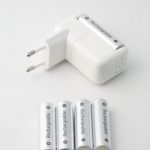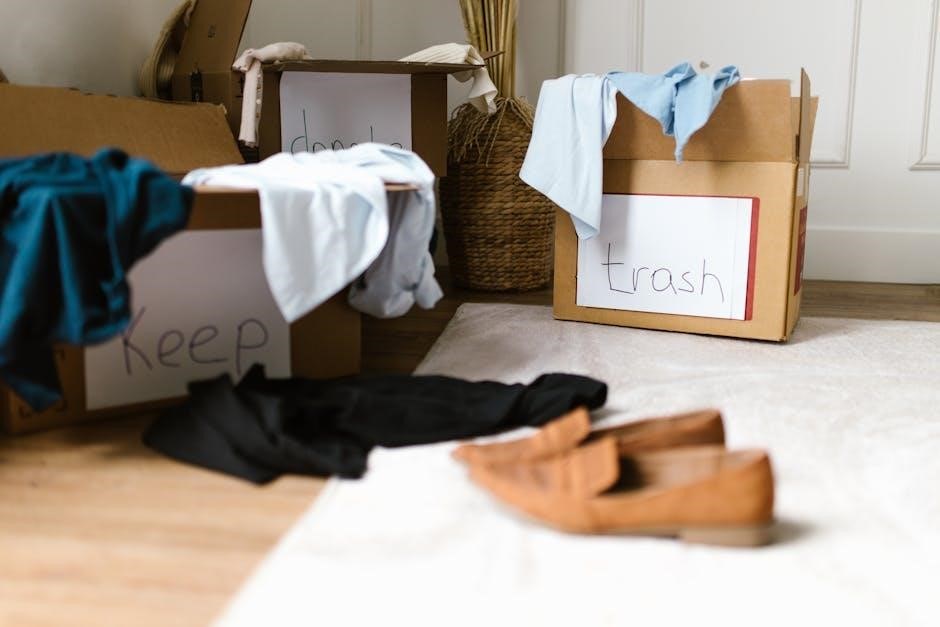
Decluttering your home is a powerful tool for creating a peaceful and organized living space․ It reduces stress, improves focus, and enhances productivity․ By using a decluttering checklist, you can systematically eliminate unnecessary items, streamline your belongings, and achieve a more organized home․ Start your journey today for a calmer, clutter-free tomorrow!
Why Decluttering is Essential for a Peaceful Living Space
Decluttering is crucial for creating a serene and tranquil home environment․ Clutter often leads to increased stress, as it overwhelms the senses and disrupts focus․ A clutter-free space fosters mental clarity, allowing for better concentration and productivity․ Additionally, decluttering enhances safety by reducing tripping hazards and fire risks, especially in areas like kitchens and bathrooms․ It also promotes emotional well-being by eliminating the weight of unnecessary possessions, leading to a sense of relief and renewal․ Using a decluttering checklist helps streamline this process, ensuring a systematic approach to organizing and maintaining a peaceful living space․ By decluttering, you create an environment that supports relaxation, efficiency, and overall well-being․
Benefits of Using a Decluttering Checklist
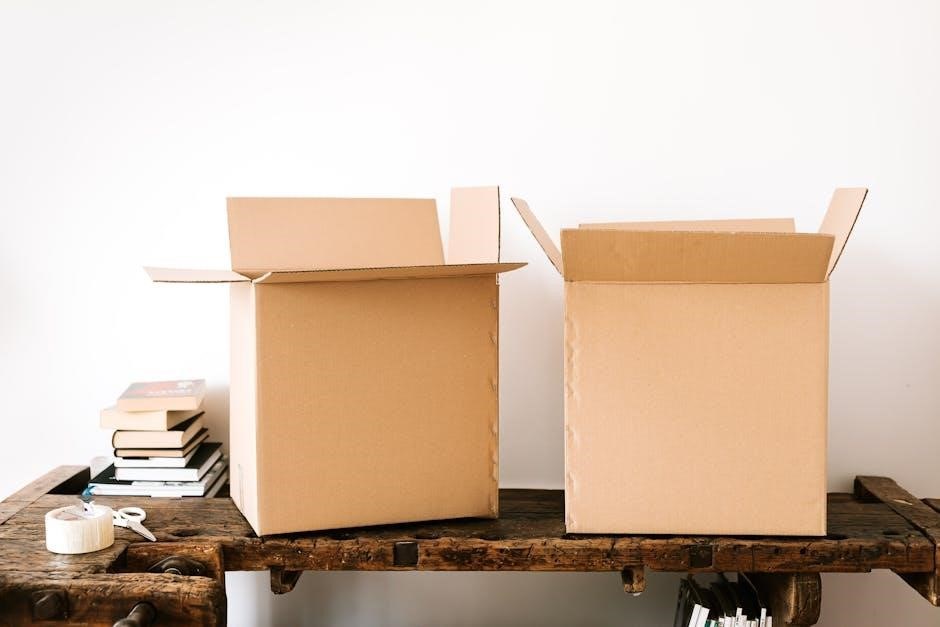
A decluttering checklist is an invaluable tool for organizing your space efficiently․ It helps break down the task into manageable steps, ensuring no area is overlooked․ By providing a clear structure, it reduces overwhelm and keeps you focused on your goals․ Checklists also allow you to track progress, which can be motivating and rewarding․ They save time by guiding you on what to tackle first, preventing decision fatigue․ Additionally, a checklist ensures consistency, helping you maintain organization over time․ Customizable options let you tailor the process to your specific needs, making decluttering more effective and sustainable․ Ultimately, a decluttering checklist simplifies the journey to a clutter-free home, offering clarity and confidence every step of the way․
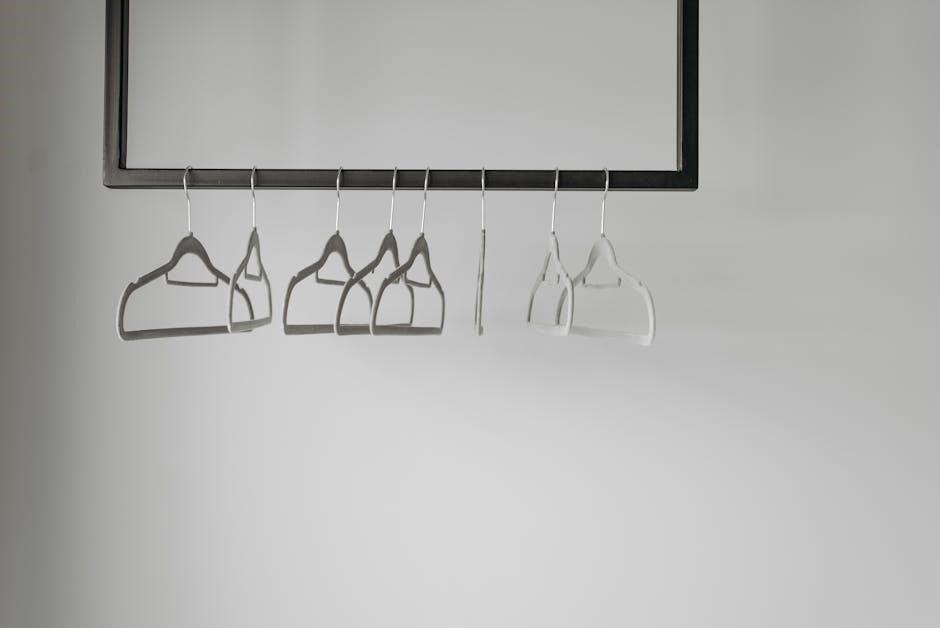
Understanding the Decluttering Process

Decluttering is a systematic approach to organizing your space by identifying and removing unnecessary items․ It involves categorizing belongings, using checklists for clarity, and creating a structured plan to achieve a more organized and peaceful home environment․
What is a Decluttering Checklist?
A decluttering checklist is a practical tool designed to guide individuals through the process of organizing and simplifying their living spaces․ It provides a structured list of items to consider removing, categorizing, or organizing, often broken down by room or category․ Many checklists are available as free printable PDFs, offering a customizable approach to decluttering․ They typically include blank spaces for users to add specific items relevant to their personal clutter challenges․ The checklist helps create a clear plan, making the decluttering process feel less overwhelming․ By focusing on one area at a time, users can efficiently sort through belongings, decide what to keep or discard, and maintain a clutter-free environment․ This tool is especially helpful for those seeking a systematic approach to achieving a more organized and peaceful home․
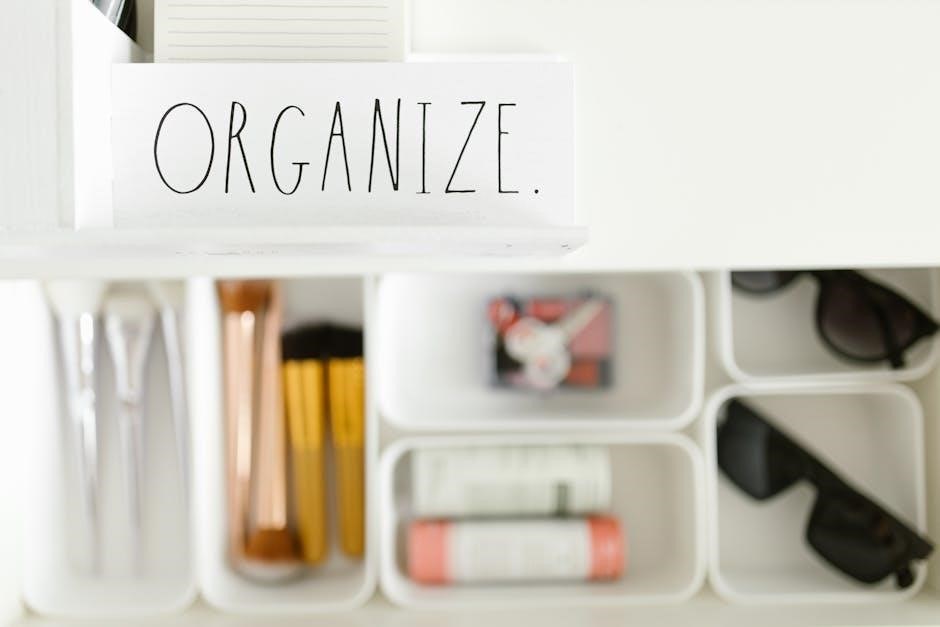
How to Use a Decluttering Checklist Effectively
To use a decluttering checklist effectively, start by downloading and printing the PDF version, allowing you to mark items as you progress․ Begin by breaking down tasks into smaller, manageable steps, focusing on one room or category at a time․ Customize the checklist to suit your needs by adding specific items or areas you want to address․ Prioritize spaces that bother you the most or have the greatest impact on your daily life․ Set realistic goals, such as decluttering one area per day, and stick to them․ Use the checklist to track your progress and stay motivated․ Remember to review and update your checklist regularly to maintain your space and ensure long-term success․ By following these steps, you can efficiently transform your home into a clutter-free and organized environment․
Key Principles of Successful Decluttering
Successful decluttering begins with clarity about what you want your space to reflect․ Focus on intentionality, keeping only items that serve a purpose or bring joy․ Start small, tackling one area at a time to avoid overwhelm․ Be ruthless—let go of duplicates, broken items, and things no longer needed․ Use storage solutions wisely, ensuring everything has a designated place․ Maintain consistency by scheduling regular decluttering sessions․ Involve all household members to foster accountability․ Remember, decluttering is about creating a space that supports your well-being and productivity․ By adhering to these principles, you can achieve a clutter-free home that feels peaceful and organized․ Stay committed to your goals and enjoy the benefits of a simplified living environment․
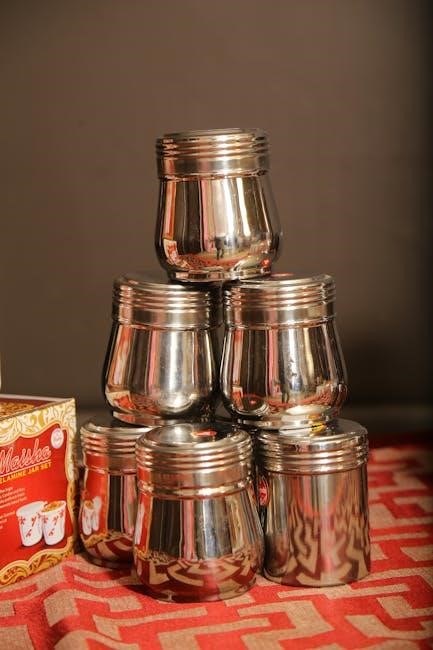
Creating a Customized Decluttering Plan
A personalized decluttering plan helps you tackle your space efficiently․ Start by assessing your needs, setting realistic goals, and breaking tasks into manageable steps․ This approach ensures progress without overwhelm, making your decluttering journey effective and sustainable․
Assessing Your Space and Needs
Begin by evaluating each room to identify clutter hotspots and prioritize areas needing attention․ Consider your lifestyle, storage needs, and personal preferences to tailor your approach․ Use a printable decluttering checklist to systematically assess items, categorizing them into keep, donate, sell, and discard piles․ This step ensures you address high-impact areas first, making the process efficient and focused․ By understanding your space and needs, you can create a plan that aligns with your goals, ensuring a more organized and functional home․ Regular assessments help maintain order and prevent future clutter buildup, keeping your space serene and clutter-free․
Setting Realistic Goals for Decluttering
Setting realistic goals is essential to make decluttering manageable and sustainable․ Start by breaking down tasks into smaller, achievable steps to avoid feeling overwhelmed․ Identify high-impact areas, such as cluttered entryways or kitchen counters, and prioritize them․ Use a printable decluttering checklist to track progress and stay focused․ Consider time constraints and energy levels when setting deadlines, ensuring goals are flexible and adaptable․ Celebrate small victories to stay motivated and maintain momentum․ By setting clear, attainable objectives, you can create a structured plan that aligns with your lifestyle and helps you gradually achieve a clutter-free home․ Remember, decluttering is a process, and steady progress leads to lasting results․
Breaking Down the Task Room by Room
Decluttering your home becomes more manageable when you tackle one room at a time․ Start by creating a room-by-room checklist to identify areas that need attention․ For the kitchen, focus on expired food, unused gadgets, and cluttered countertops․ In the living room, sort through dusty decorations, outdated magazines, and disorganized electronics․ The bedroom should prioritize sorting clothes, clearing out unused shoes, and organizing drawers․ Bathrooms can be decluttered by discarding expired toiletries and streamlining storage․ By focusing on one space at a time, you avoid feeling overwhelmed and ensure a thorough cleanup․ Use your checklist to track progress and maintain motivation․ This methodical approach ensures every corner of your home is addressed, leading to a more organized and peaceful living environment․

Room-by-Room Decluttering Guide
A comprehensive guide to decluttering each room, offering tailored strategies for kitchens, bedrooms, bathrooms, and more․ Focus on common clutter hotspots and use checklists to stay organized․
Kitchen: Items to Purge and Organize
The kitchen is a key area for decluttering, as it often accumulates unnecessary items․ Start by purging expired or unused food, broken appliances, and redundant gadgets․ Toss worn-out storage containers, stained dishware, and single-use items that clutter your drawers․ Organize remaining items by category, such as baking supplies, cooking utensils, and cleaning products․ Use labels and baskets to maximize storage space․ Consider a “one in, one out” policy to maintain order․ Regularly clean out the pantry and fridge to avoid expired items․ A decluttered kitchen not only enhances functionality but also makes meal prep and cleaning easier․ Refer to your checklist for a room-by-room guide to ensure every corner of your kitchen is streamlined and clutter-free․
Living Room: Simplifying and Streamlining
The living room is a space for relaxation and connection, so decluttering it is essential for a serene environment․ Begin by removing unnecessary items like broken electronics, outdated magazines, and unused decorative pieces․ Organize furniture to create a flow, and consider downsizing to only what brings comfort or joy․ Use storage solutions like baskets or ottomans to keep items hidden yet accessible․ Dust and vacuum regularly to maintain a clean atmosphere․ Implement the “one in, one out” rule to prevent clutter buildup․ For sentimental items, keep only what holds meaningful value or store them in a designated memory box․ Streamlining your living room creates a calming space for socializing and unwinding, making it a true heart of your home․
Bedroom: Creating a Calm and Clutter-Free Oasis
Your bedroom should be a sanctuary of peace and relaxation․ Start by sorting through clothing, keeping only what fits and brings comfort; Discard or donate items that are no longer needed․ Remove any clutter from nightstands and dressers, keeping only essentials visible․ Consider using storage bins or baskets for items like socks and accessories․ Dust and vacuum regularly to maintain a clean environment․ Eliminate distractions like unused electronics or unnecessary decor․ Implement the “one in, one out” rule to prevent clutter from building up again․ For sentimental items, store them in a designated box or album․ By simplifying your bedroom, you create a space that promotes restful sleep and mental calm, transforming it into a true retreat for relaxation and rejuvenation․
Bathroom: Essentials to Keep and What to Discard
The bathroom is a space for relaxation and hygiene, so it’s important to keep it clutter-free and functional․ Start by purging expired toiletries, unused beauty products, and worn-out towels․ Keep only essential items like toothbrushes, toothpaste, shampoo, conditioner, and body wash․ Store these in labeled containers or baskets to maintain order․ Discard any broken or outdated personal care items, such as razors or hair accessories․ Consider organizing your medications in a dedicated cabinet or bin․ Replace old bath mats and washcloths with fresh ones․ Regularly clean and disinfect surfaces to prevent grime buildup․ By focusing on what you truly need and use, you can create a serene and efficient bathroom environment that promotes wellness and ease․
Home Office/Study: Organizing Papers and Digital Files
Transform your home office or study into a productive workspace by decluttering and organizing both physical and digital files․ Start by sorting papers into categories like “keep,” “recycle,” and “shred․” Keep only essential documents, such as important records or receipts, and digitize them for secure storage․ Use labeled folders or a digital cloud service to maintain order․ Discard outdated or unnecessary paperwork, and organize office supplies like pens, notebooks, and chargers in designated containers․ For digital files, create a clear folder structure and regularly back up your data․ Schedule regular decluttering sessions to keep your space tidy and efficient․ This structured approach will help you stay focused and improve your overall productivity․
Garage/Storage Areas: Maximizing Space and Reducing Clutter
Transform your garage or storage areas into functional spaces by tackling clutter and optimizing organization․ Begin by sorting items into categories like “keep,” “donate,” and “discard․” Be ruthless with broken or unused items, as they often occupy valuable space․ Use vertical storage solutions like shelves, hooks, and bins to maximize capacity․ Label everything clearly to ensure easy access and maintain order․ Consider installing overhead racks for seasonal items like holiday decorations to free up floor space․ Regularly clean and inspect stored goods to prevent dust buildup and pest infestations․ By decluttering and organizing, you can turn chaotic garages or storage areas into efficient, stress-free zones that enhance your home’s functionality․
Outdoor Spaces: Decluttering Patios and Gardens
Outdoor spaces like patios and gardens are extensions of your home, deserving the same attention as indoor areas․ Start by removing broken furniture, dead plants, and debris that clutter the space․ Organize gardening tools, storing them in labeled bins or a shed․ Use weather-resistant storage solutions for cushions and seasonal decorations․ Clean surfaces like patios, walkways, and garden benches to restore their appearance․ Prune overgrown plants and weeds, and consider repurposing or donating items still in good condition․ Refresh your garden with vibrant flowers or new planters to create a welcoming atmosphere․ Regular maintenance will keep your outdoor spaces inviting and functional, ensuring they remain a peaceful retreat for relaxation and enjoyment year-round․

Decluttering Tips and Tricks
Start small, focus on one area at a time․ Use the “one in, one out” rule to maintain balance․ Handle sentimental items thoughtfully, keeping only what brings joy․ Utilize DIY storage solutions to maximize space efficiently․
Start Small: Decluttering One Area at a Time
Decluttering can feel overwhelming, but starting small is key to success․ Begin with one area, like your kitchen counter or a single drawer, and focus on it entirely․ This approach prevents burnout and helps build momentum․ Set a timer for 10-15 minutes daily to tackle a specific space․ Use a decluttering checklist to guide your progress and keep track of what’s been accomplished․ Prioritize high-impact areas first, such as entryways or frequently used rooms, to see immediate results․ Remember, small steps lead to big changes over time․ Celebrate each tiny victory to stay motivated and maintain your momentum․ This method ensures a manageable and sustainable path to a clutter-free home․
The Power of the “One In, One Out” Rule
The “One In, One Out” rule is a simple yet effective strategy for maintaining a clutter-free home․ For every new item you bring into your space, remove or donate an old one to keep the balance․ This rule prevents accumulation and helps you evaluate the value of each possession․ It encourages mindful consumption and ensures your home remains organized․ By applying this rule consistently, you’ll avoid clutter buildup and make decision-making easier․ Over time, it fosters a habit of only keeping what truly adds value to your life․ Use your decluttering checklist to track items entering and leaving your home, ensuring a sustainable approach to organizing your space․
How to Handle Sentimental Items
Handling sentimental items can be emotionally challenging but is crucial for decluttering effectively․ Start by designating a memory box for items that hold deep personal value, keeping only a few meaningful pieces․ Take photos of items you wish to remember but no longer need, creating a digital archive; Set boundaries by asking yourself if the item brings joy or serves a purpose․ Letting go of sentimental clutter doesn’t erase memories; it frees space for what truly matters․ Use your decluttering checklist to categorize and decide on each item thoughtfully․ Remember, the goal is to honor memories while creating a clutter-free, peaceful home․ Prioritize items that bring joy and discard those that no longer serve you emotionally or practically․
DIY Storage Solutions for Small Spaces
Maximizing storage in small spaces is essential for maintaining organization․ Use stackable plastic bins or woven baskets to store items like linens, toys, or seasonal decor․ Install floating shelves or hooks on walls to keep belongings off the floor and create a sense of openness․ Repurpose everyday items, such as mason jars for small kitchen utensils or old crates for bookshelves․ Utilize under-bed storage containers for out-of-season clothes or bedding․ Opt for multi-functional furniture, like ottomans with built-in storage, to serve dual purposes․ These DIY solutions are cost-effective and can be tailored to fit your specific needs, helping you declutter and organize even the tightest spaces efficiently․
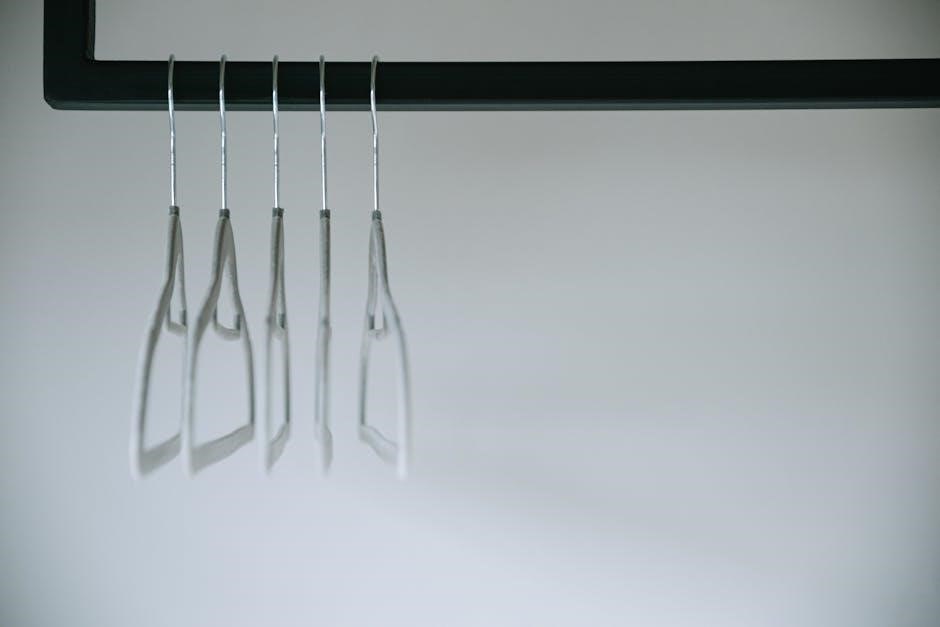
Maintaining Your Decluttered Home
Establish a routine to keep your space organized, such as daily tidying and weekly reviews of clutter-prone areas․ Use checklists to guide ongoing decluttering and ensure lasting results․
Creating a Routine for Ongoing Decluttering
Establishing a consistent decluttering routine is key to maintaining a clutter-free home․ Start with daily habits, such as a 10-minute tidy-up or the “one in, one out” rule․ Set weekly tasks like reviewing clutter-prone areas or organizing small spaces․ Monthly, focus on deeper organizing, such as sorting through paperwork or seasonal items․ Use a printable decluttering checklist to track progress and stay motivated․ Incorporate family members into the process to share responsibilities․ Adjust the routine to fit your lifestyle, ensuring it remains realistic and sustainable․ Regular decluttering not only prevents clutter buildup but also fosters a sense of calm and control over your environment․
Teaching Family Members to Maintain the Space
Involving your family in maintaining a clutter-free home fosters responsibility and teamwork․ Assign each member specific tasks based on their age and ability, such as tidying up their belongings or helping with laundry․ Educate them on the importance of organization and how it benefits everyone․ Encourage a “one in, one out” mindset to prevent clutter buildup․ Use a printable decluttering checklist together to track progress and make it a fun, collaborative process․ Praise their efforts and celebrate small victories to keep motivation high․ Regular family meetings can help discuss challenges and adjust routines as needed․ Leading by example and making decluttering a shared goal ensures a sustainable, organized home environment for years to come․
Seasonal Decluttering: A Year-Round Approach
Seasonal decluttering helps maintain a clutter-free home throughout the year by tackling specific areas during each season; Spring is ideal for organizing closets and decluttering winter items, while summer focuses on outdoor spaces and toys․ Fall is perfect for sorting through cozy items like blankets and winter gear, and winter is great for decluttering holiday decorations and paper clutter․ Using a printable decluttering checklist, you can create a year-round plan that keeps your home organized․ Rotate tasks seasonally to ensure no area is neglected․ This approach prevents clutter from building up and keeps your space refreshed and functional․ By incorporating seasonal decluttering into your routine, you can enjoy a balanced and organized home all year round․
A clutter-free home brings peace, efficiency, and joy․ Using a decluttering checklist ensures lasting organization․ Embrace this transformative process for a cleaner, more organized, and stress-free living space․
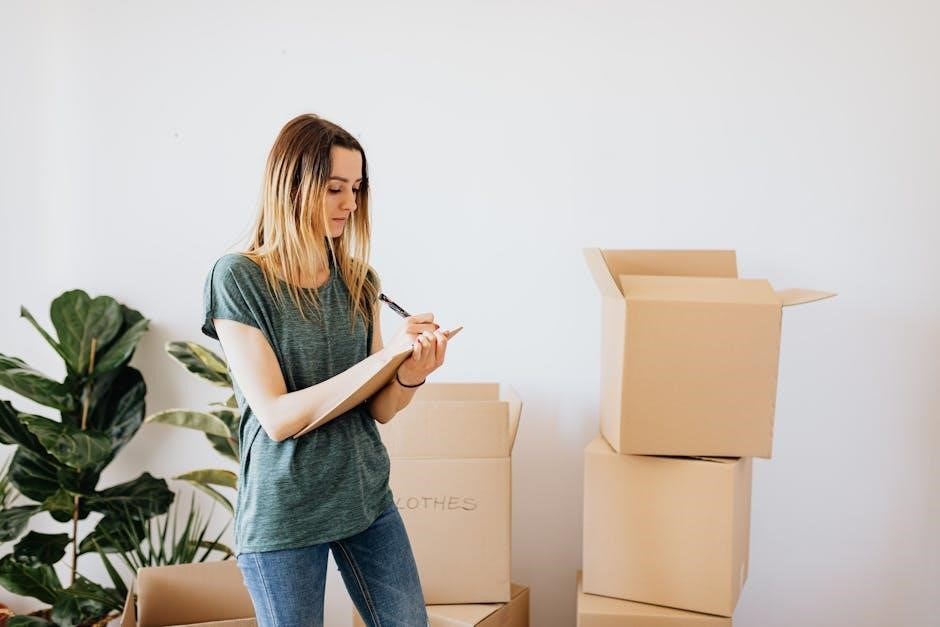
The Long-Term Benefits of a Clutter-Free Home
A clutter-free home offers lasting benefits, including reduced stress, improved mental clarity, and enhanced productivity․ By maintaining an organized space, you create an environment that fosters peace and calm, allowing you to focus on what truly matters․
Over time, decluttering helps you develop healthier habits, such as mindful consumption and regular maintenance of your surroundings․ This leads to a more sustainable lifestyle, as you learn to value what you own and avoid unnecessary purchases․
With a clutter-free home, you’ll also enjoy financial savings from avoiding duplicate purchases and potential health benefits from a cleaner, allergen-free space․ The effort you put into decluttering pays off in the long run, creating a home that is not only organized but also uplifting and inspiring․
Staying Motivated to Keep Your Space Organized
Staying motivated to maintain an organized home requires consistent effort and mindset shifts․ Use a decluttering checklist to track progress and celebrate small victories, which helps build confidence and momentum․ Breaking tasks into manageable steps ensures the process feels less overwhelming․ Implementing habits like the “One In, One Out” rule prevents clutter from accumulating․ Sharing your goals with a friend or family member adds accountability and encouragement․ Regularly reminding yourself of the benefits—such as reduced stress and improved focus—keeps motivation high․ Over time, organization becomes second nature, creating a lasting, peaceful living environment․

